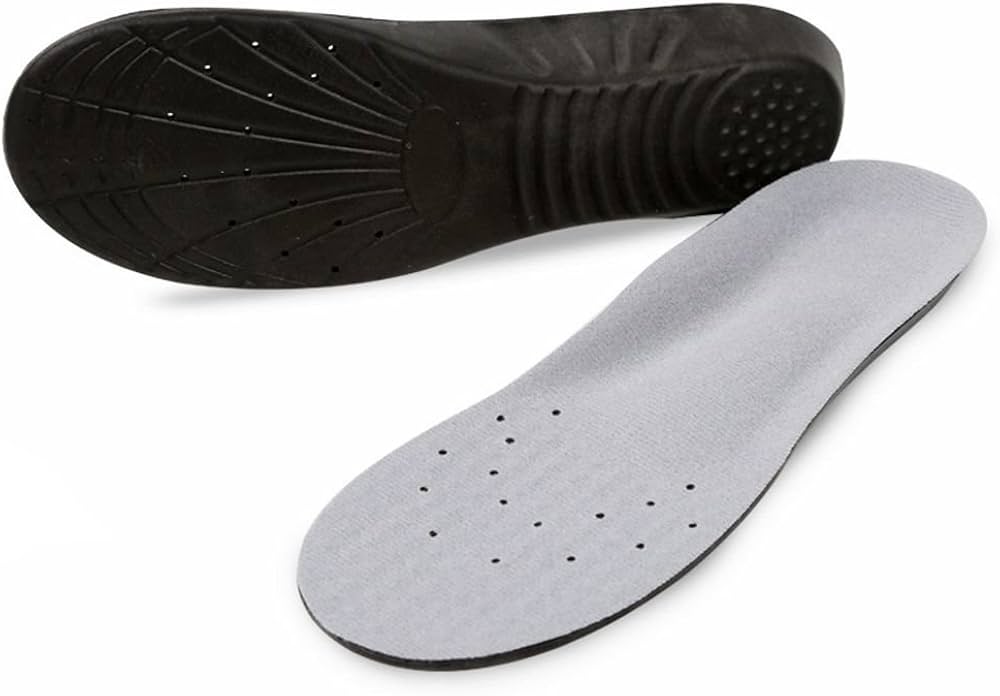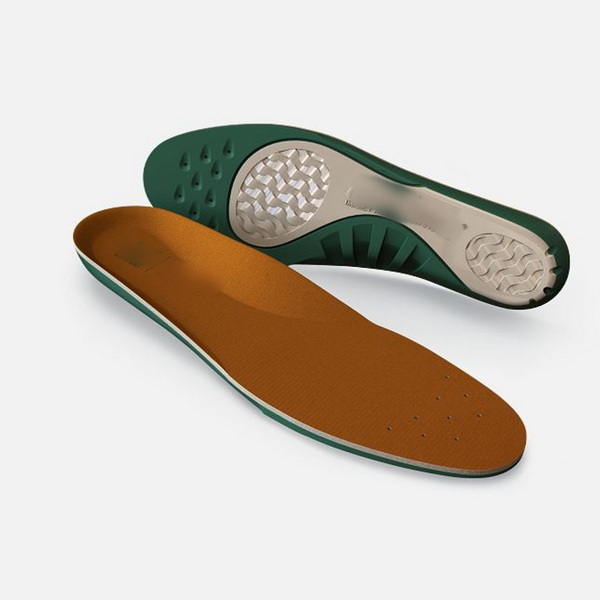Views: 222 Author: Edvo Publish Time: 2025-11-18 Origin: Site











Content Menu
● The Evolution of Shoe Insoles
● Advantages of Quality Foam Insoles
>> Enhanced Comfort and Pressure Relief
>> Individualized Arch and Heel Support
● The Role of Foam Insoles in Performance Footwear
● Addressing Health and Wellness with Foam Insoles
● Foam Insoles in Work and Safety Environments
● Customization with OEM Foam Insoles
● Environmental Responsibility in Foam Insole Manufacturing
● How to Select the Right Foam Insole
>> Foot Anatomy and Support Needs
>> Durability
>> Hypoallergenic and Hygienic Features
● Proper Care and Longevity of Foam Insoles
● Advancements in Foam Insole Technology
● Brand Positioning and OEM Partnerships
● Frequently Asked Questions (FAQ)
>> 1. Why do foam insoles flatten over time?
>> 2. How often should foam insoles be replaced?
>> 3. Are foam insoles suitable for people with foot pain?
>> 4. Can foam insoles be washed in the washing machine?
>> 5. What's the difference between memory foam and EVA foam insoles?
Shoes are much more than fashion—they are a foundation for our comfort, health, and performance. One of the most crucial yet frequently underestimated innovations within modern footwear is the foam insole. Whether for a high-performance athlete, a worker standing long hours, or anyone seeking all-day comfort, foam insoles deserve center stage. As a leading Chinese OEM insole manufacturer, we know that the right foam insole profoundly enhances shoe value and overall user satisfaction.

Shoes were once nothing but basic protective coverings, offering little in terms of comfort. Early insoles were simple leather or cloth linings. Over centuries, innovative materials and ergonomic designs transformed insoles from basic padding to sophisticated comfort systems. Foam insoles, introduced in the later twentieth century, revolutionized footwear by catering to diverse anatomical and performance needs. Today, almost every quality shoe incorporates a foam insole—proof of their universal impact.
A foam insole is an insert, either built-in or removable, crafted using advanced materials like polyurethane, memory foam, or EVA (ethylene vinyl acetate). The foam insole acts as a buffer, softening each step, absorbing shocks, and supporting the foot for prolonged comfort. Modern foam insoles often use layered designs to target different needs, such as enhanced arch support, breathability, or moisture management.
- Memory foam: Molds to the foot's shape, delivering unrivaled comfort and pressure distribution.
- PU foam: Highly durable, resilient, and suitable for prolonged daily wear.
- EVA foam: Lightweight and flexible, providing robust energy return and shock protection—especially favored in athletic footwear.
These materials have drastically improved the performance and longevity of insoles for all kinds of users.
The primary benefit of a well-designed foam insole is comfort. By spreading a person's weight evenly and relieving pressure from sensitive areas, foam insoles minimize discomfort and fatigue, making them indispensable for people who spend long hours on their feet.
Every step generates impact, which can stress joints and lead to sore feet, ankles, or knees. Foam insoles offer layered shock absorption, actively reducing the intensity of these impacts and lowering the risk of injury for both casual walkers and athletes alike.
No two feet are identical. Foam insoles can be engineered to support high arches, low arches, or common problem areas such as the heel and the ball of the foot. Certain foam types retain their shape longer, providing consistent support even after thousands of use cycles.
Advanced foam technologies create insoles that stay cool and dry, using micro-perforation or moisture-wicking linings. Antimicrobial treatments further help prevent odors, bacteria, and fungi, ensuring that shoes remain hygienic and fresh.
Manufacturers can tailor foam density, thickness, and contour to fit various foot sizes, shapes, and activity types. This allows for insoles specialized for sports, safety footwear, medical rehabilitation, or luxurious comfort in everyday shoes.

Performance athletes and fitness enthusiasts rely on precise footwear engineering. A quality foam insole is often the unsung hero, making a measurable difference in competition and training by:
- Cushioning high-impact landings during running and jumping
- Supporting quick direction changes in court sports with dynamic rebound
- Boosting confidence by mitigating the risk of common foot injuries
In many cases, custom OEM insoles can target the unique needs of a given sport, optimizing energy transfer and reducing fatigue in long-distance events or power sports.
Beyond comfort, foam insoles are crucial for long-term foot and postural health. They address common orthopedic complaints, such as:
- Plantar fasciitis: Quality foam reduces ligament stress and soothes inflammation.
- Heel spurs: Strategic cushioning diminishes the pain of direct heel pressure.
- Flat feet and pronation: Specialized contours help realign joints and promote healthy movement patterns.
- Joint and back pain: By softening foot impact, insoles can relieve strain on knees, hips, and the lower back.
Doctors and podiatrists frequently recommend high-quality foam insoles as non-invasive interventions, often improving quality of life for millions who suffer from chronic discomfort.
Jobs in construction, manufacturing, healthcare, and retail often require employees to stand or walk for extended periods on unforgiving floors. In these environments, foam insoles play a critical role in workers' health and productivity. They help:
- Alleviate fatigue and boost focus
- Support strict health and safety regulations (important in PPE footwear)
- Reduce absenteeism by minimizing the risk of repetitive stress injuries
By enhancing comfort, foam insoles help workers stay productive and safe, reducing the costs associated with workplace discomfort or injury.
Brands and wholesalers looking to differentiate their footwear can achieve significant advantages by choosing the right OEM foam insole partner. Through close collaboration, it becomes possible to:
- Specify insole thickness, density, contour, and material properties
- Align color and branding for seamless integration with final shoes
- Integrate proprietary technologies or unique design elements
- Conduct joint R&D for next-generation insole solutions
Cutting-edge manufacturers not only produce to specification, but also advise on material advancements, ergonomic trends, and regulatory standards, ensuring branded shoes exceed consumer expectations globally.
As sustainability grows more important to brands and consumers, the foam insole industry is undertaking eco-friendly initiatives. Environmentally responsible manufacturers:
- Use recycled and renewable raw materials in foam production
- Apply water-based adhesives and non-toxic treatments
- Optimize processes for waste reduction and lower carbon footprints
- Implement closed-loop recycling cycles for used insoles
Such practices help brands meet global sustainability pledges while maintaining high performance standards.
Choosing the right foam insole involves an understanding of several critical factors:
The arch height, pronation pattern, and pressure zones of the foot determine the appropriate insole design. Detailed pressure mapping and customized fitting can identify exact requirements.
Work boots, dress shoes, running sneakers, and hiking boots all demand different features. Foam density, insole thickness, and material breathability should be matched to typical wear scenarios for optimal effect.
The expected frequency and intensity of use dictate insole choice. Higher-density foams last longer but may be slightly heavier, while lighter foams are suitable for infrequent or recreational shoes.
Materials and treatments must be selected carefully for users with allergies or for shoes used in moist, high-bacteria environments.
To ensure ongoing comfort and hygiene, regular maintenance is essential. Tips include:
- Periodic removal and airing-out to prevent moisture accumulation
- Hand-washing with gentle soap and air-drying away from direct sunlight
- Replacing insoles when there are visible signs of deformation, loss of resilience, or persistent odor
These practices can significantly extend the useful life and effectiveness of insoles.
The future of foam insole development is marked by several exciting trends:
- Integration of smart sensors for gait and health tracking
- Use of adaptive foams that change firmness in response to temperature or pressure
- Fully recyclable insoles made from plant-based polymers
- Antimicrobial coatings with extended-release action for prolonged hygiene
- 3D printing for truly custom, on-demand insole fabrication
Brands that embrace technological innovations stand to deliver unique user experiences and capture emerging markets early.
Foam insole design is now a key differentiator for shoe brands worldwide. Strategic OEM partnerships allow for co-development, rapid prototyping, and exclusive features that directly impact marketing narratives. This collaborative approach helps position products at the forefront of comfort, health, and sustainability trends, building customer loyalty and competitive advantage.
Foam insoles are the unsung heroes of modern footwear, blending science and comfort to enhance every step. They address not just personal comfort but also long-term foot health, athletic performance, workplace safety, and even environmental responsibility. As manufacturers push the limits of foam technology, brands and users alike benefit from ongoing improvements in durability, health impact, customization, and eco-friendliness. For shoe brands, wholesalers, and manufacturers worldwide, a strong insole strategy—enabled by expert OEM suppliers—can elevate products, win customer loyalty, and secure a leading position in a demanding marketplace.

Foam insoles flatten primarily due to repeated compression from walking and standing. Over weeks and months, the foam's structure can lose elasticity, making timely replacement beneficial for sustained support and comfort.
For daily users, a replacement every six to twelve months is recommended, though high-impact activities or heavier users may need to replace insoles more frequently. If the insole no longer retains its shape or feels less cushioned, it's time for a new pair.
Absolutely. Quality foam insoles are a first-line remedy for many types of foot pain, supporting conditions such as flat feet, plantar fasciitis, and general soreness. Orthopedic or custom OEM insoles can be tailored to provide optimal relief for specific diagnoses.
Hand washing is generally preferred to preserve the foam's integrity. Most foam insoles can be gently scrubbed with mild soap and water, then air-dried. Machine washing is likely to damage adhesives and reduce the insole's service life.
Memory foam insoles deliver deep, individualized cushioning as they conform to each foot's unique shape. EVA foam insoles are typically lighter with quicker rebound and are favored for athletic footwear where dynamic support is key.